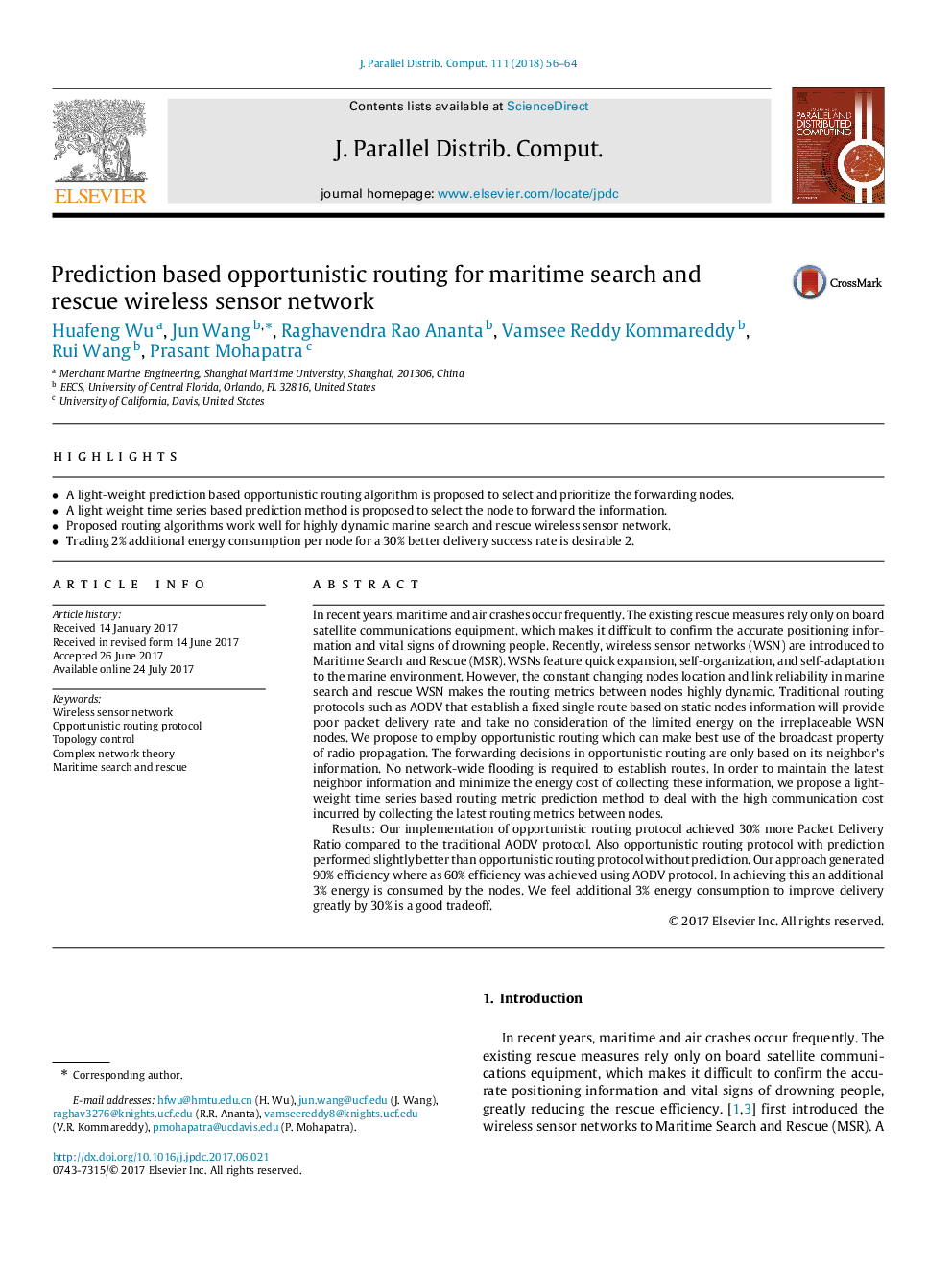| کد مقاله | کد نشریه | سال انتشار | مقاله انگلیسی | نسخه تمام متن |
|---|---|---|---|---|
| 4951504 | 1441474 | 2018 | 9 صفحه PDF | دانلود رایگان |
- A light-weight prediction based opportunistic routing algorithm is proposed to select and prioritize the forwarding nodes.
- A light weight time series based prediction method is proposed to select the node to forward the information.
- Proposed routing algorithms work well for highly dynamic marine search and rescue wireless sensor network.
- Trading 2% additional energy consumption per node for a 30% better delivery success rate is desirable 2.
In recent years, maritime and air crashes occur frequently. The existing rescue measures rely only on board satellite communications equipment, which makes it difficult to confirm the accurate positioning information and vital signs of drowning people. Recently, wireless sensor networks (WSN) are introduced to Maritime Search and Rescue (MSR). WSNs feature quick expansion, self-organization, and self-adaptation to the marine environment. However, the constant changing nodes location and link reliability in marine search and rescue WSN makes the routing metrics between nodes highly dynamic. Traditional routing protocols such as AODV that establish a fixed single route based on static nodes information will provide poor packet delivery rate and take no consideration of the limited energy on the irreplaceable WSN nodes. We propose to employ opportunistic routing which can make best use of the broadcast property of radio propagation. The forwarding decisions in opportunistic routing are only based on its neighbor's information. No network-wide flooding is required to establish routes. In order to maintain the latest neighbor information and minimize the energy cost of collecting these information, we propose a light-weight time series based routing metric prediction method to deal with the high communication cost incurred by collecting the latest routing metrics between nodes.Results: Our implementation of opportunistic routing protocol achieved 30% more Packet Delivery Ratio compared to the traditional AODV protocol. Also opportunistic routing protocol with prediction performed slightly better than opportunistic routing protocol without prediction. Our approach generated 90% efficiency where as 60% efficiency was achieved using AODV protocol. In achieving this an additional 3% energy is consumed by the nodes. We feel additional 3% energy consumption to improve delivery greatly by 30% is a good tradeoff.
Journal: Journal of Parallel and Distributed Computing - Volume 111, January 2018, Pages 56-64
